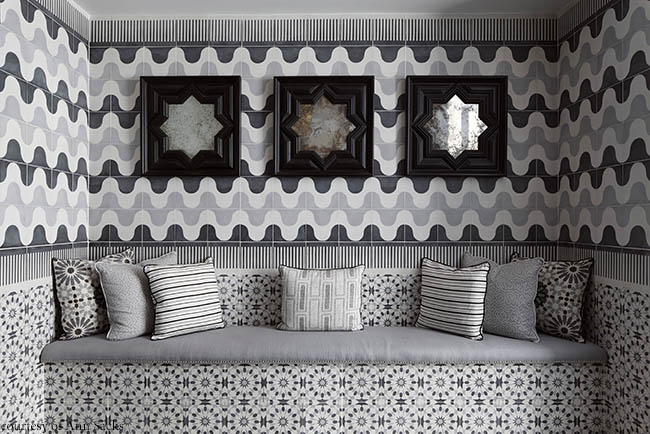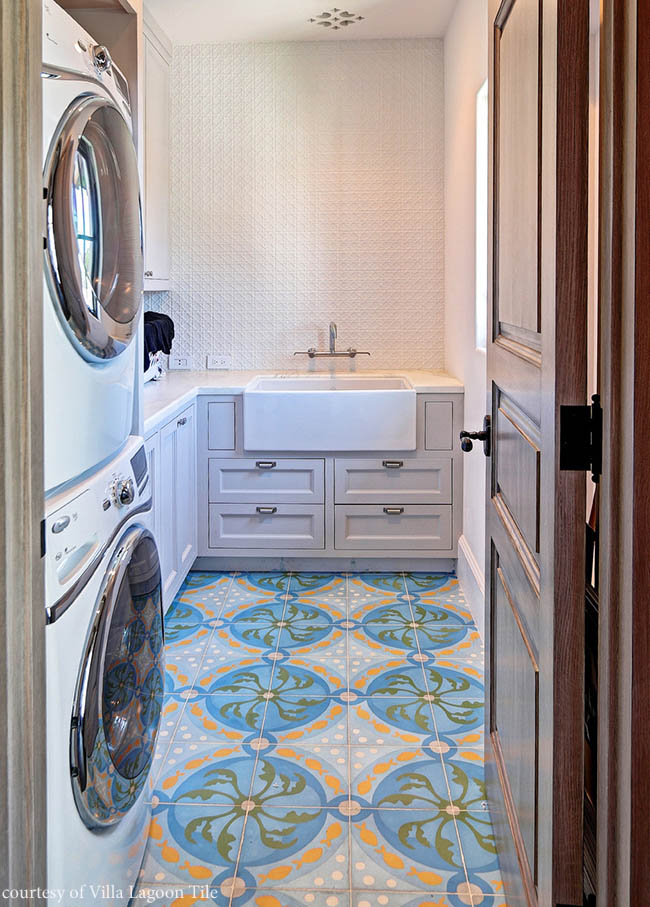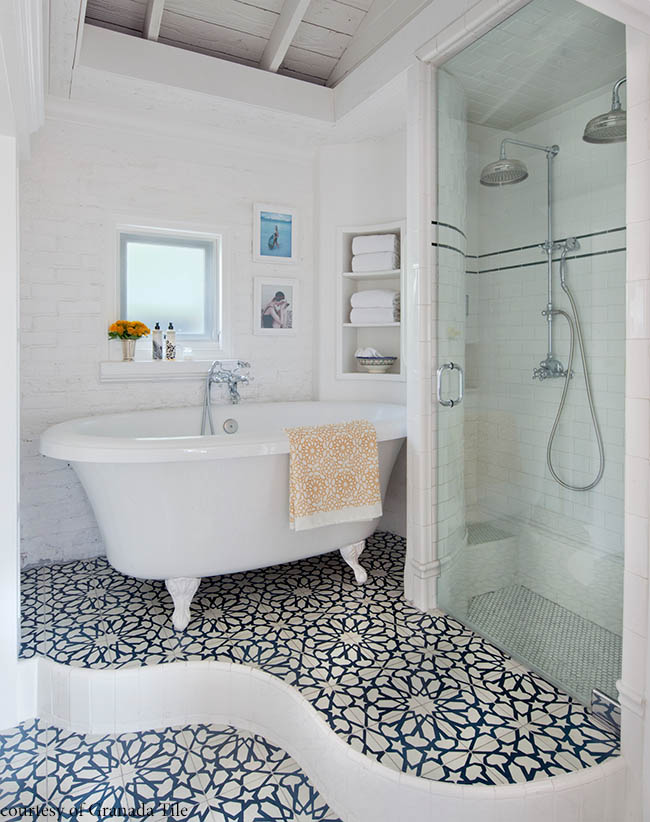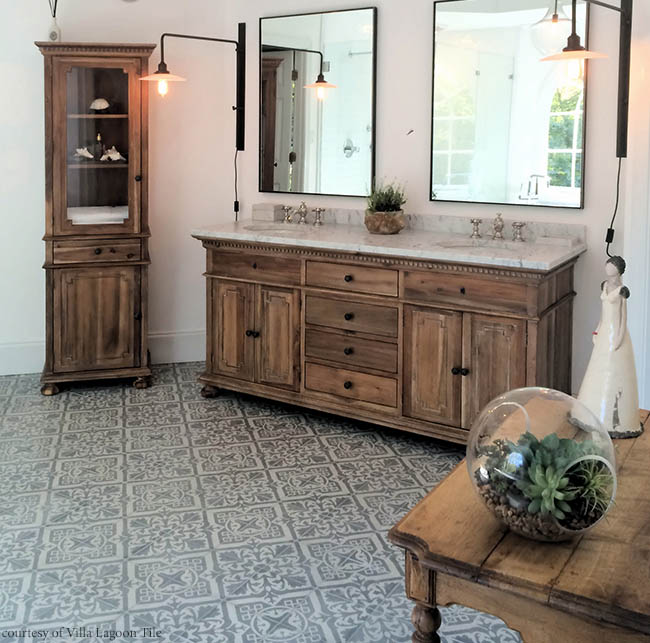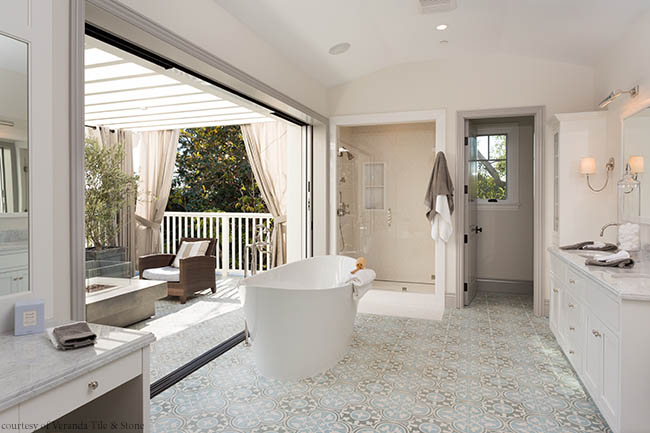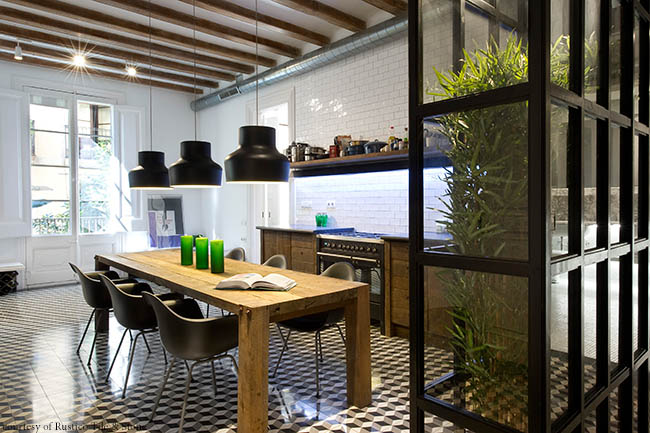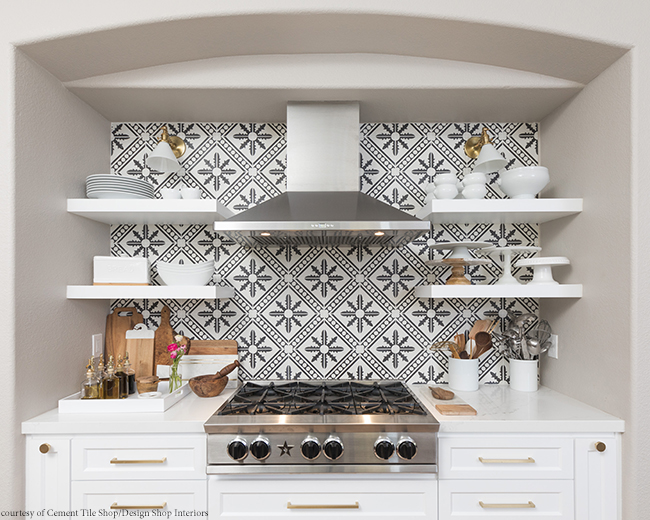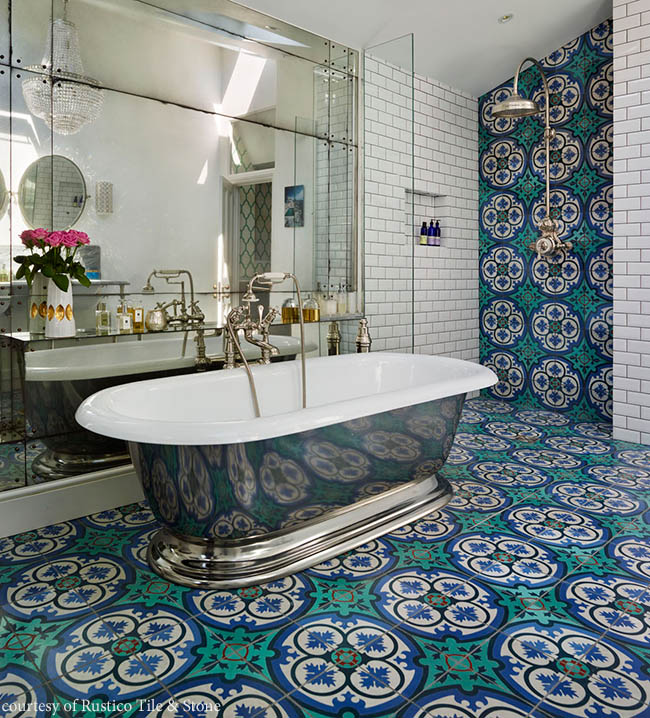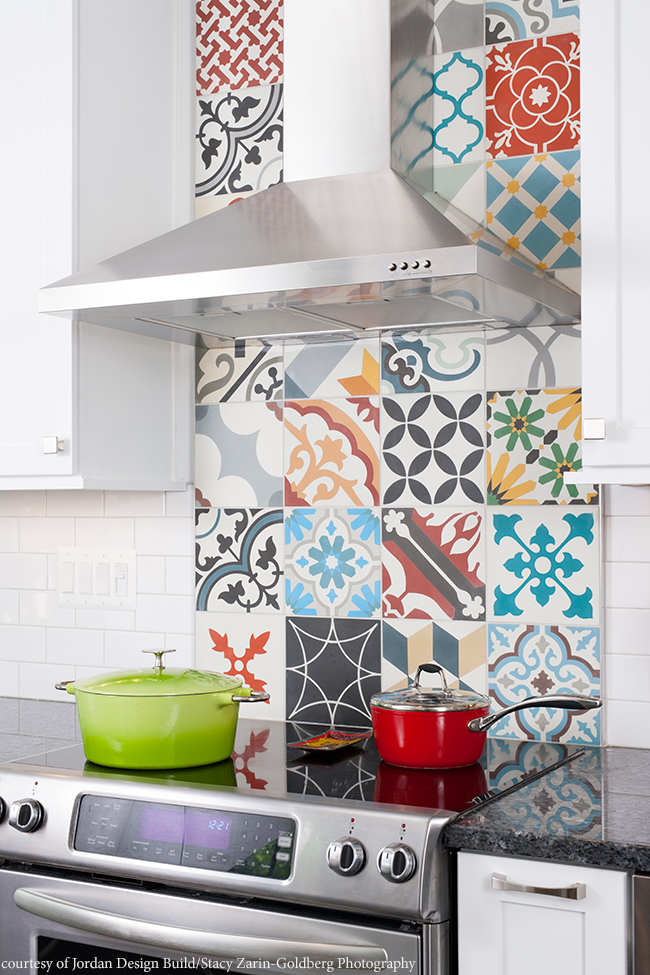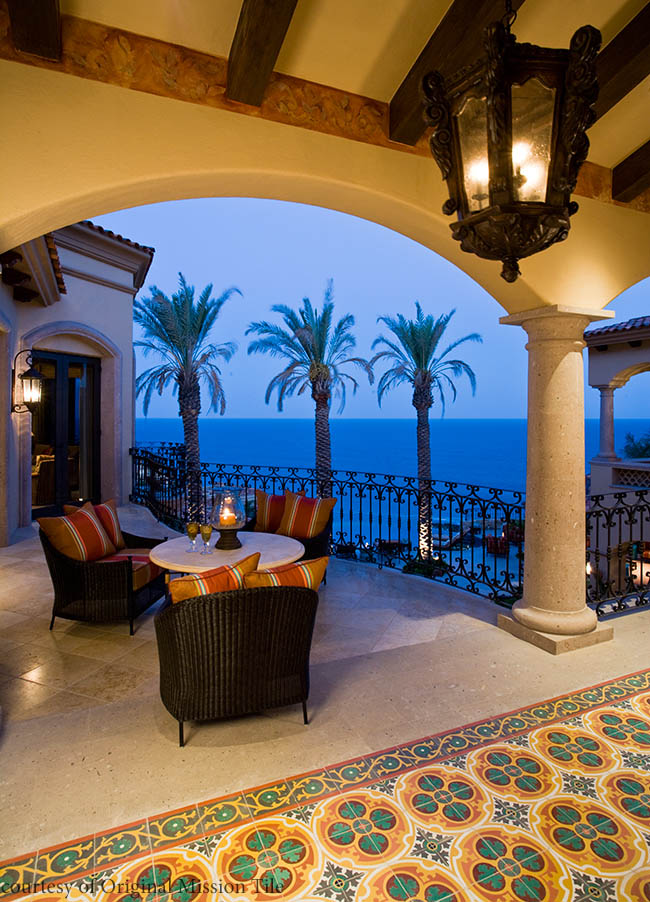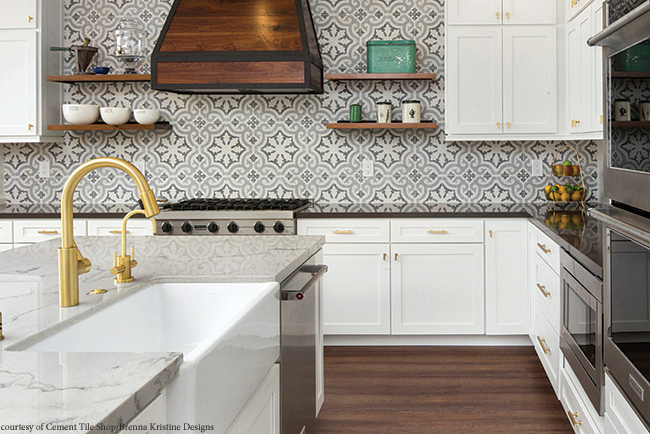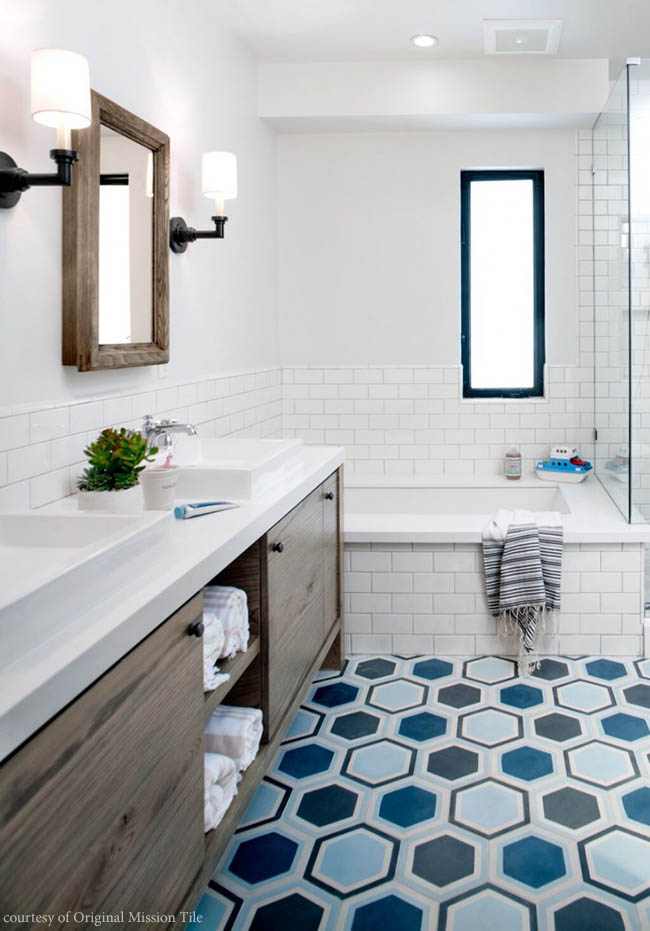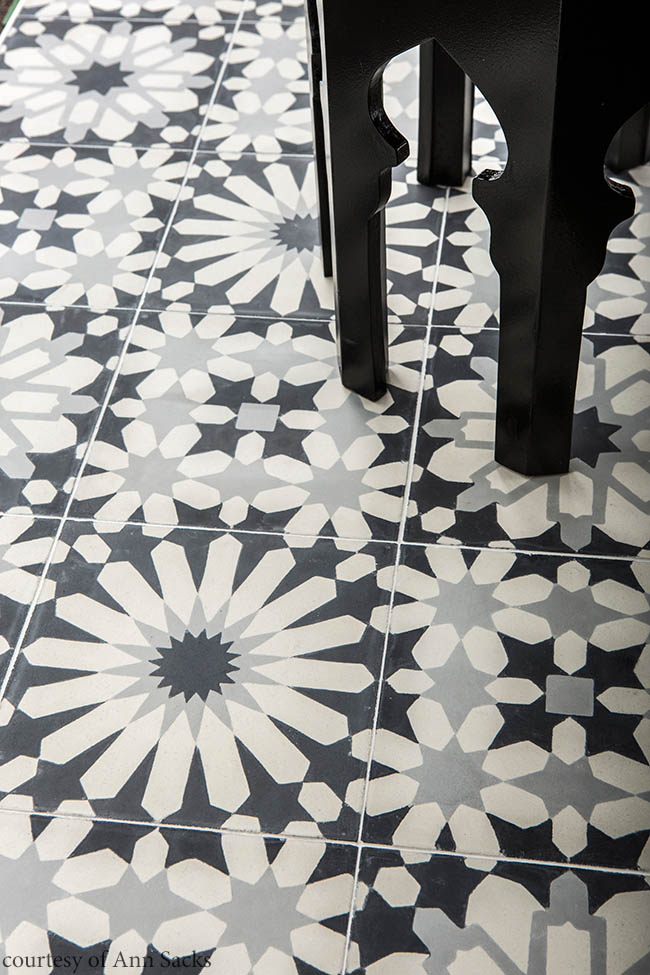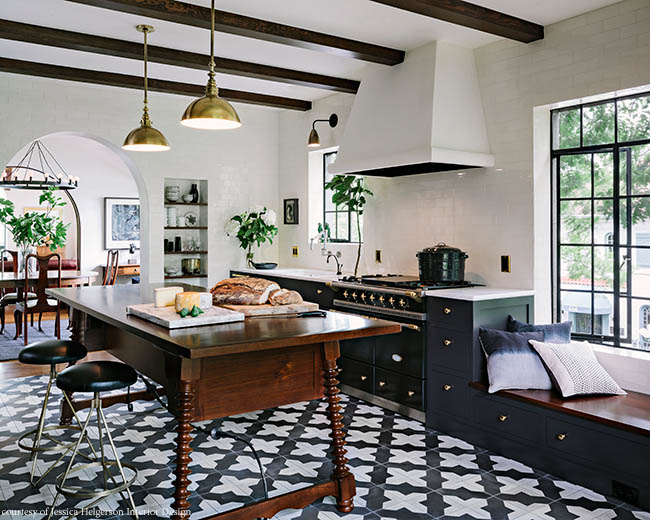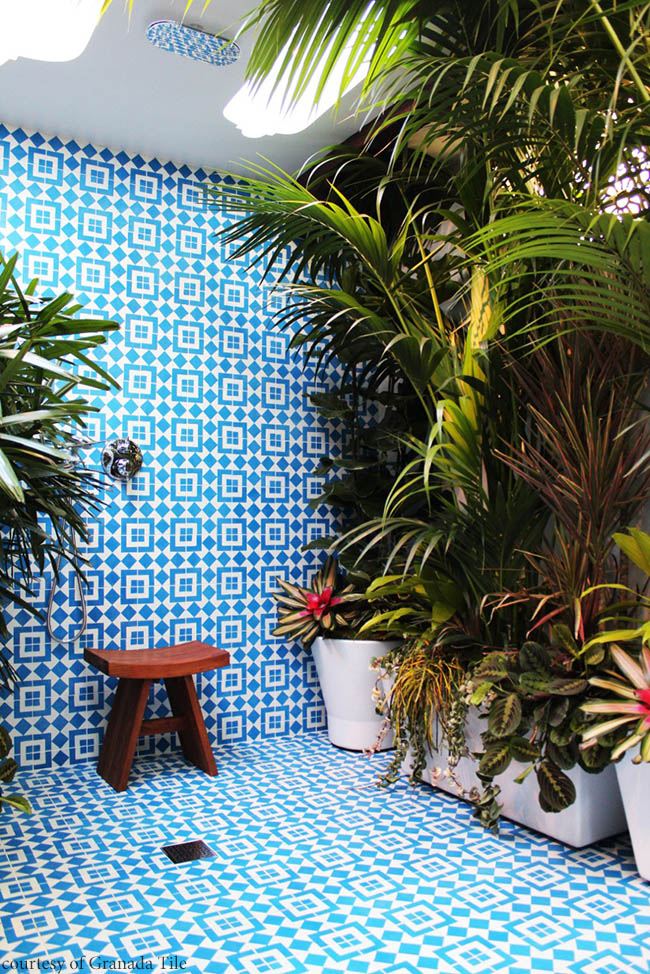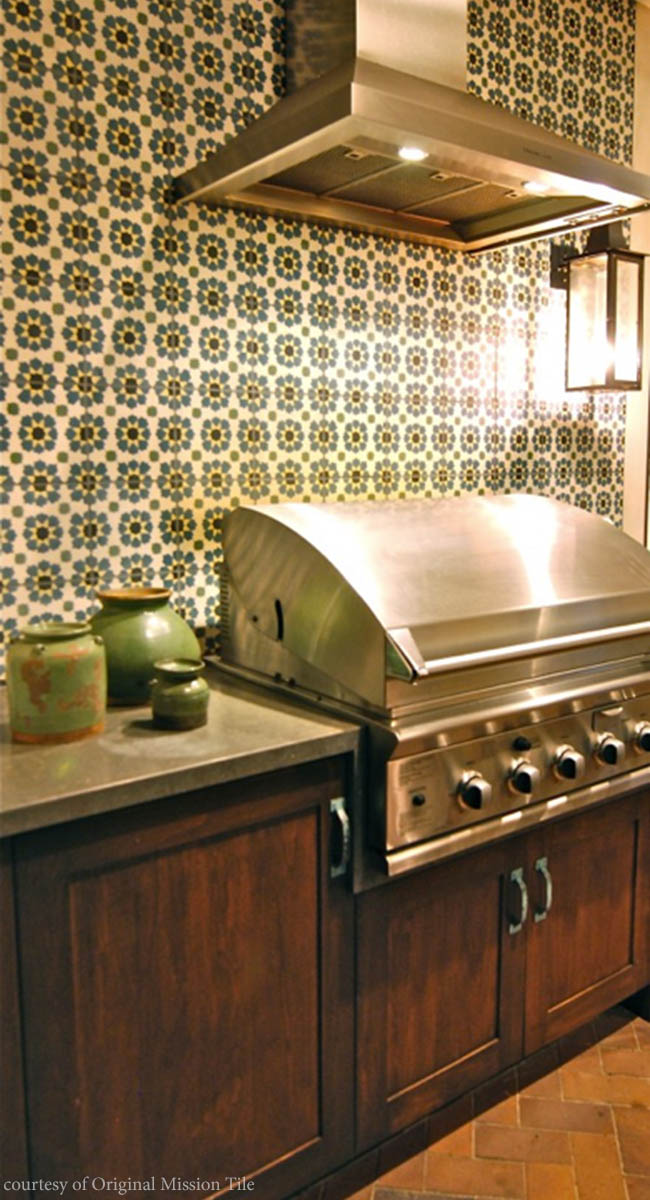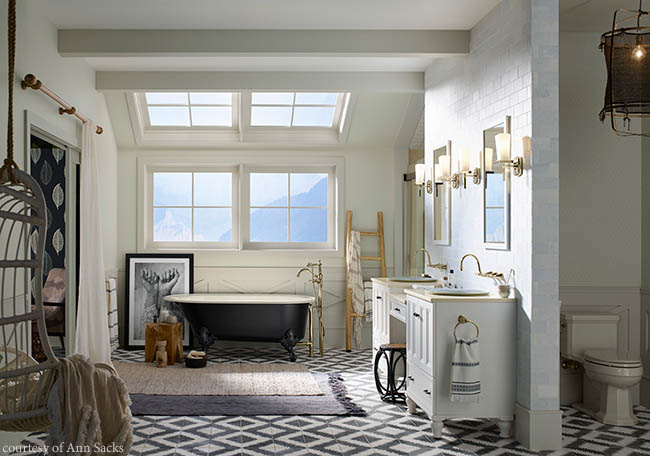Patterned cement tile seems to be popping up everywhere. Dating back roughly three centuries, these unique tiles conjure up thoughts of Moroccan architecture, Spanish villas and Mexican haciendas. Exhibiting a handmade look with bold colors and eclectic geometric shapes, these tiles can completely transform the look of your home.
The beauty of patterned cement tile is its ability to complement a wide range of design styles. It can create a vintage look in a traditional kitchen, but also establish the perfect focal point in a modern bathroom.
Before you have the first tile installed, it’s important to learn about what you’re bringing into your home.
The basics
Melanie Stephens, co-founder of Granada Tile, says cement tile has revitalized an art form that developed in France in the mid-1800s. Some even say the true origins of this tile date back to Barcelona.
“Unlike handmade ceramic tiles, which are usually hand-painted, glazed and fired, cement tiles, also known as encaustic tiles, are made by first pouring a mixture of cement and color pigment into separate compartments in a metal mold (a sort of oversized cookie cutter),” Stephens says. “This first color layer is 1/8-inch thick. Next we add concrete and press the tile under 2,000 pounds of pressure per square inch. This upside-down cake is left to cure, creating a remarkably strong and lustrous cement tile.”
When it comes to the types of tile you are looking for, material makes a huge difference. According to Stephens, tiles made with low-grade pigment will not have the same richness and depth of color and those made without marble powder—an important component added to the cement—will not have the same natural luster.
“There are a lot of knock-offs out there, such as cement tile with painted designs that wear off,” says Melanie Ocana, who owns Rustico Tile & Stone with her husband, Ray Ocana. “With quality cement tile, the top layer is pigmented cement. You have several millimeters of color and with wear and tear you aren’t going to lose color.”
Chris Clamp of Cement Tile Shop recommends getting a sample of any cement tile you might be interested in installing. “We source from factories worldwide,” Clamp says. “Although the process is the same, each factories’ tiles have unique characteristics. These characteristics can be anything from irregular edges and pattern imperfections to the compactness of the cement.”
Location, location, location
It all depends on the room you’ve chosen to remodel, but if you want patterned tiles and you aren’t sure what room to put them in, Stephens recommends to start with the kitchen or a bathroom. Keep in mind that you are not just limited to flooring—kitchen backsplashes and shower focal points or wall niches are great places to add a touch of character or vintage style.
Clamp adds that mudrooms and laundry rooms are great places to experiment. He’s also seeing homeowners use the patterned tile on fireplace surrounds and as accent walls.
Ocana says the beauty of cement tile allows people to place a personal stamp on their home. “We even have customers changing a design. They take out one particular piece and add another element. It is just like a piece of custom artwork.”
“As cement tile becomes better known and people are seeing its many uses, they are becoming more adventuresome with its applications,” Stephens says. “We have even had people put it on their ceilings.”
While cement tile can be used outside, there are a few limitations. “The tiles are not recommended for outdoor flooring in areas which experience freezing temperatures, since freezing and thawing of water on the tiles can weaken them,” Stephen says. “They are also not meant for vehicular traffic.”
Ocana says that if homeowners do install cement tile outside to do so under a covered patio or lanai. “If it is properly installed and fully waterproofed—from the subfloor to the sealant—it can be a beautiful addition to an outdoor space,” she says. “We recommend that homeowners inspect the tile prior to and after winter to ensure it is withstanding the elements.”
Pattern frenzy
If you’re wondering what tiles would work based on your type of home, Clamp says it’s all about personal taste. “We do have very classic patterns that look great in a mid-century house or more abstract patterns that work in a contemporary setting, but we have seen people do so many different things because they just love a particular pattern,” he adds. “We offer a visualizer on our website that allows you to ‘try on’ our patterns in different room scenes or even in your own space.”
Other than the kitchen, bathrooms are a great place to add patterned tiles. In that case, it’s important to know that both Stephens and Clamp say their tiles are safe to use in showers so you don’t have to worry about slipping. “Our tiles have been tested by the Tile Council of North America and more than meet ADA requirements for slip resistance,” Clamp says. “We do recommend sealing the tiles for protection from moisture in wet areas.”
If you aren’t certain about what style to use, Clamp says that classic styles such as florals, geometrics and Moroccan styles are among the most popular.
“We see different trends based on geography. It’s all about the MeaLu Collection in the southwest and west coast,” says Ocana. “But northeast, in New York for example, people are interested in geometrics and monochromatic colors.”
“The most popular styles in the Minis Collection are the Star Cross pattern in gray and white and the Scale pattern in aqua,” Stephens adds. “The most popular designs in the Echo Collection are Cluny in black and white, Fez in blue and white, and Badajoz in black and white.”
Personality comes to life
The beauty of cement tile is the customization. “There are beautiful homes that are tiled from head-to-toe that do not feel overdone,” Stephens says. “That is largely because the patterns and colors harmonize and draw out the best in each other. Certainly, if you’re going to use a lot of patterned tile on floors and walls, you may want simple drapes and upholstery.”
Clamp suggests checking out Cement Tile Shop’s Instagram feed to get a sense of how much or how little their clients use. And just like other natural stone tile, cement tiles are durable and can last a lifetime. “Well-installed, the tiles can last over 100 years,” Stephens says. “At their core, encaustic tiles are hydraulically pressed concrete, a very durable material.”
Resources: Ann Sacks; Cement Tile Shop; Granada Tile; Original Mission Tile; Rustico Tile & Stone; Veranda Tile Design, available through Walker Zanger; Villa Lagoon Tile

